Photos: School-Bus-Size Dinosaur Discovered in Egypt
Egyptian titanosaur
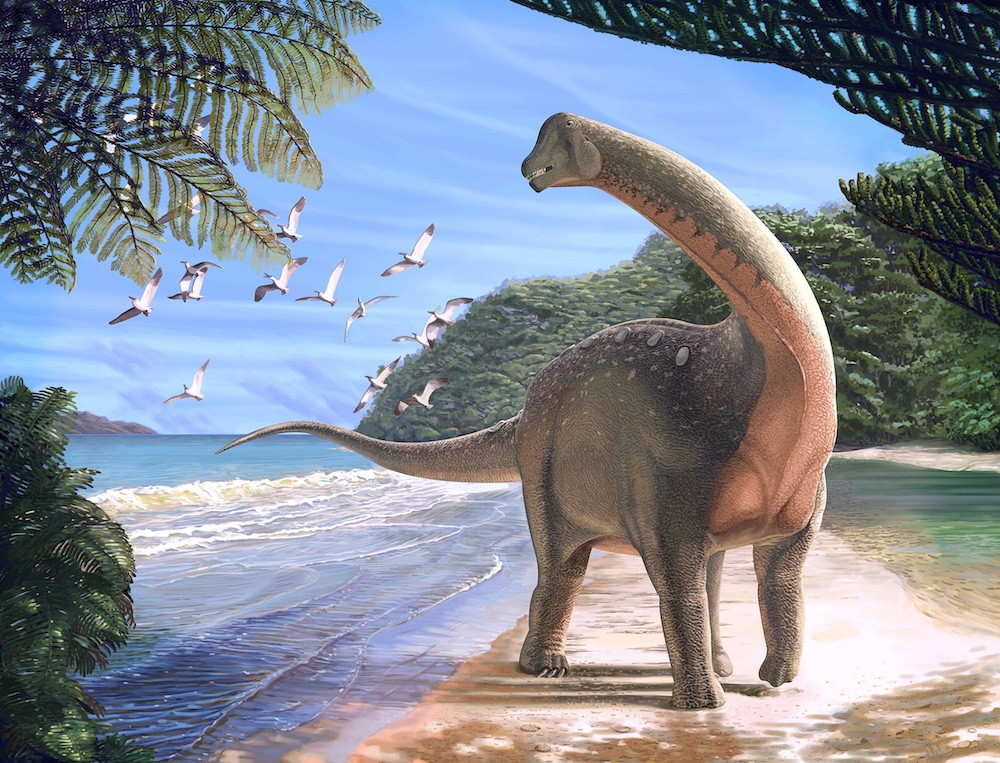
Researchers in Egypt just uncovered a newly identified long-necked dinosaur known as Mansourasaurus shahinae. This is only the sixth dinosaur species to be discovered in Egypt.
M. shahinae sheds light on dinosaur evolution on the different continents. Even though it was discovered in Egypt, M. shahinae had more in common with dinosaurs uncovered in Europe than it did with dinosaurs found in southern Africa. [Read more about the Egyptian dinosaur]
Skeletal reconstruction
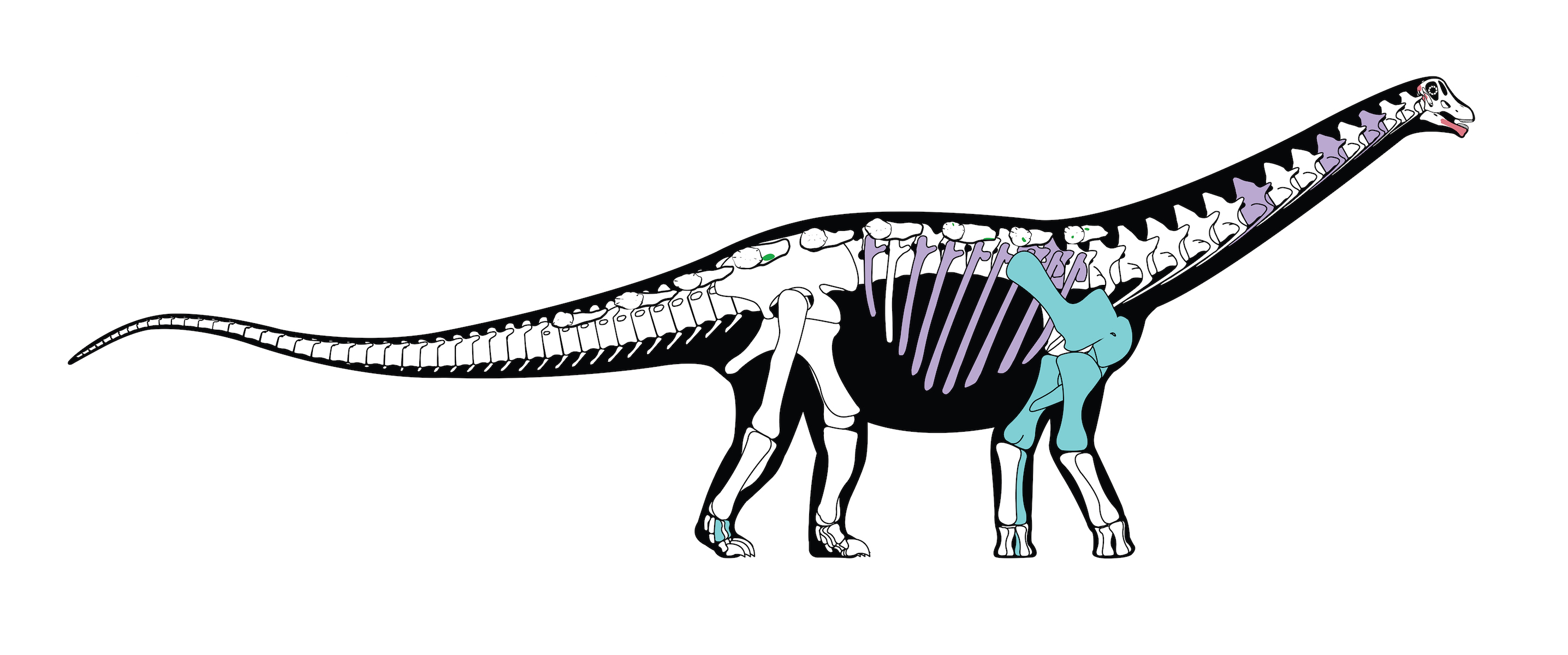
A skeletal reconstruction of the roughly 80-million-year-old M. shahinae. The colored bones are those that are preserved in the original fossil; other bones are based on those of closely related dinosaurs.
Dinosaur jaw
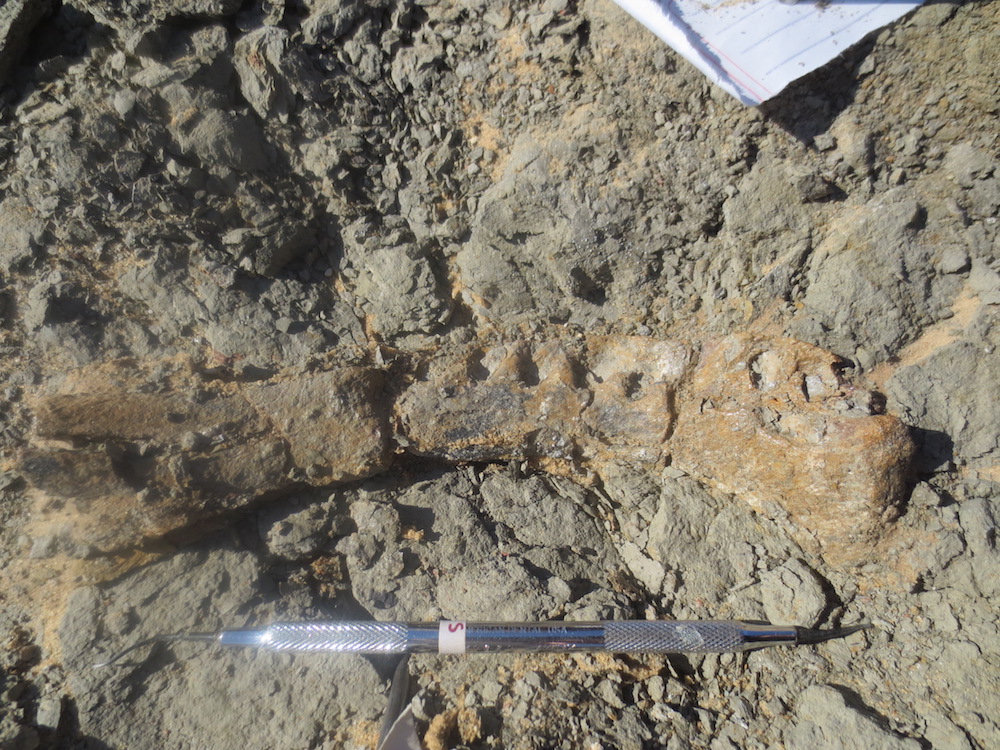
The left lower jawbone of the newly discovered titanosaurian dinosaur M. shahinae. The fossil was found in rock of the Cretaceous-age Quseir Formation in the Dakhla Oasis, in Egypt.
Careful excavation
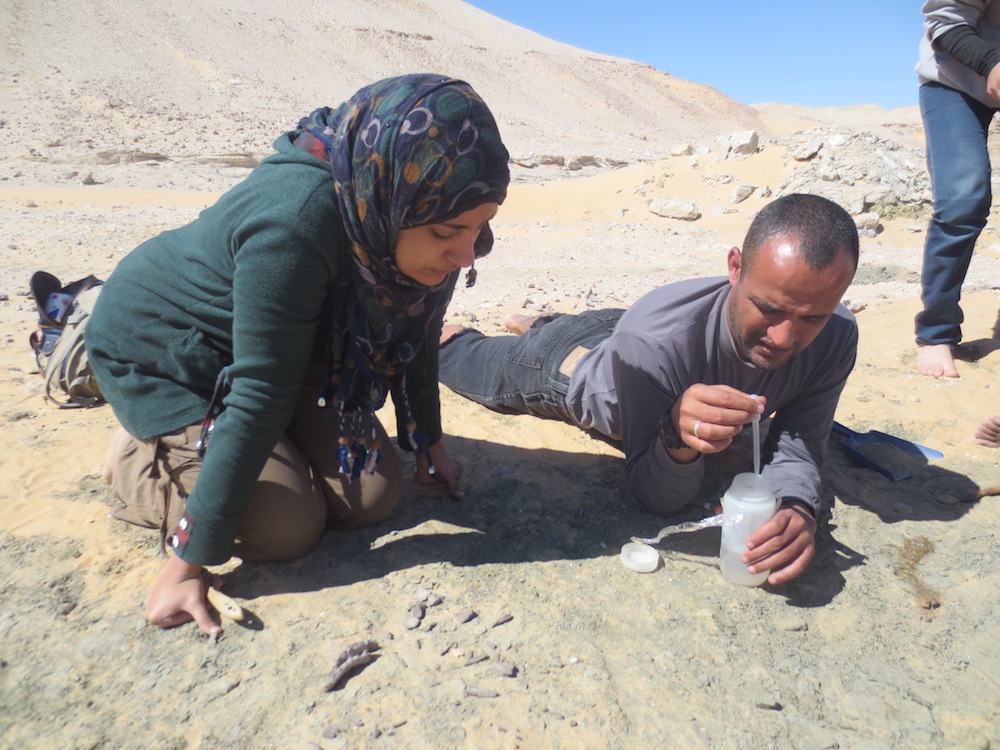
Student Mai El-Amir (left) and study lead researcher Hesham Sallam (right), of Mansoura University, prepare to glue bones of the new titanosaurian dinosaur M. shahinae in the field.
Team photo
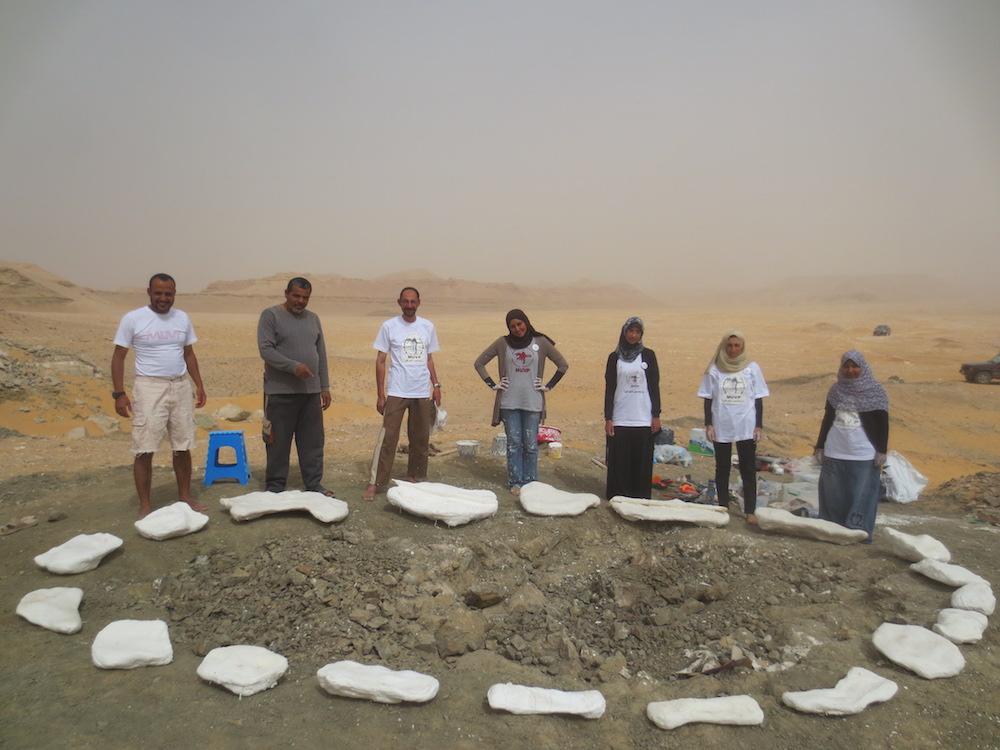
The all-Egyptian field team from the Mansoura University Vertebrate Paleontology initiative that found and collected the new titanosaurian dinosaur M. shahinae with the plaster "jackets" containing the fossil skeleton at the discovery site. From left to right: Hesham Sallam, Yassin El Saay, Farahat Ibrahim, Mai El-Amir, Sanaa El-Sayed, Iman El-Dawoudi and Sara Saber.
Forearm bone
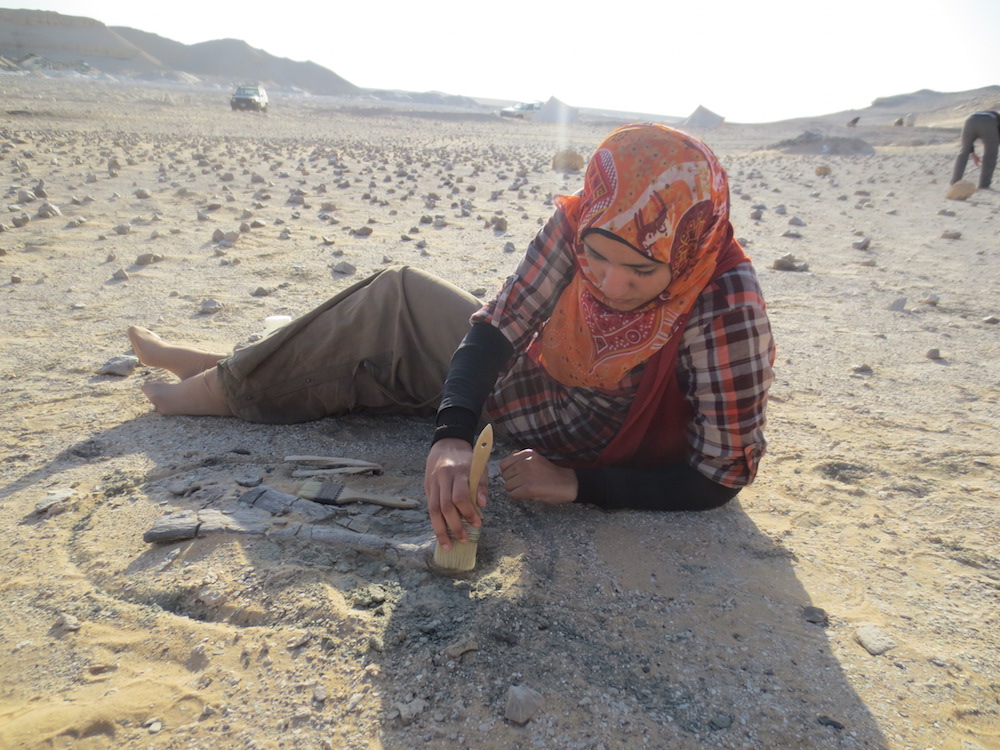
Mansoura University student Mai El-Amir brushes an ulna (forearm bone) that likely belongs to the newly identified titanosaurian dinosaur M. shahinae.
Teamwork
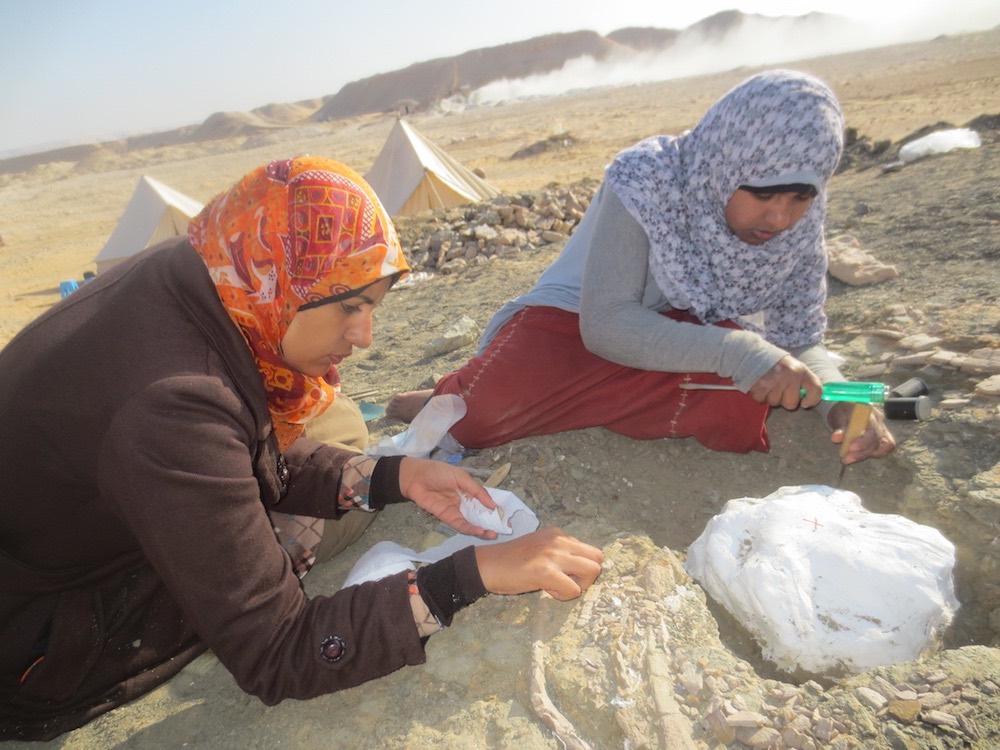
Students Mai El-Amir and Sara Saber excavate ribs and other bones of the newly discovered titanosaurian dinosaur M. shahinae in the Sahara Desert in Egypt. The team's field tents are visible in the background.
[Read more about the Egyptian dinosaur]
Sign up for the Live Science daily newsletter now
Get the world’s most fascinating discoveries delivered straight to your inbox.
The sandstorm

Despite a ferocious sandstorm, several members of the field team do their best to collect bones of M. shahinae.
Female field team
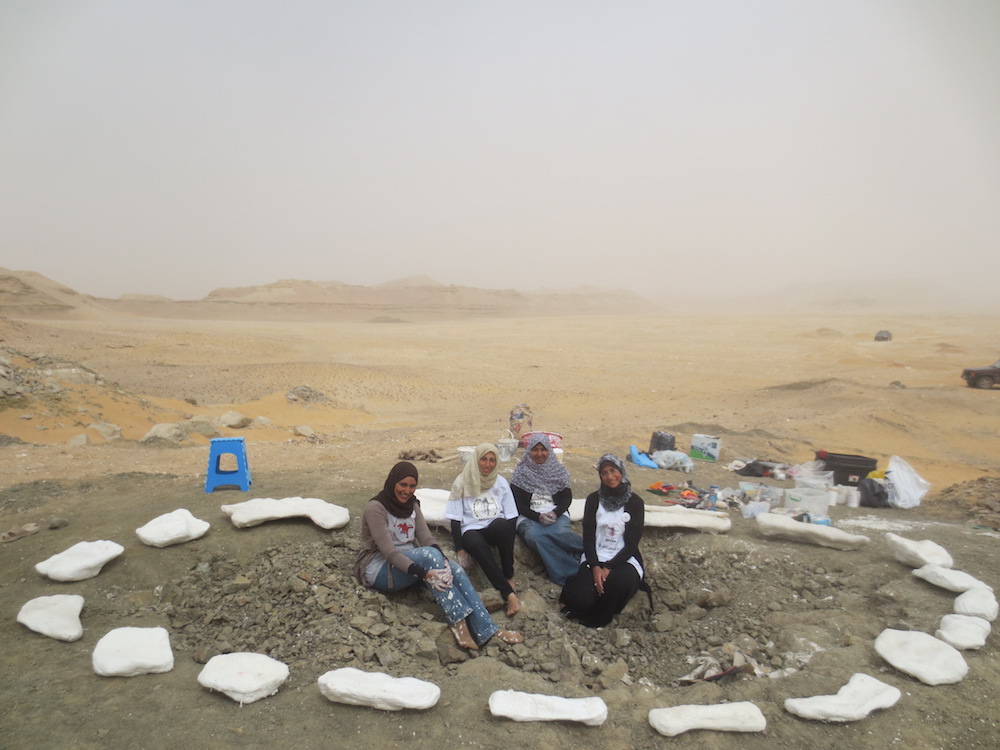
The four female members of the all-Egyptian field team that discovered M. shahinae. From left to right: Mai El-Amir, Iman El-Dawoudi, Sara Saber and Sanaa El-Sayed. The "jackets" contain the fossil skeleton.
Jawbone
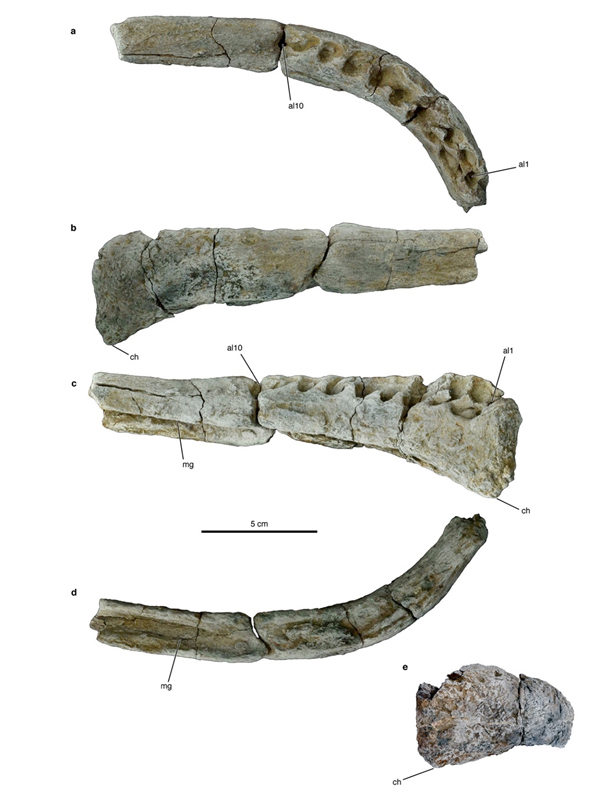
M. shahinae's lower jawbone, shown here from five perspectives.
Shoulder bone
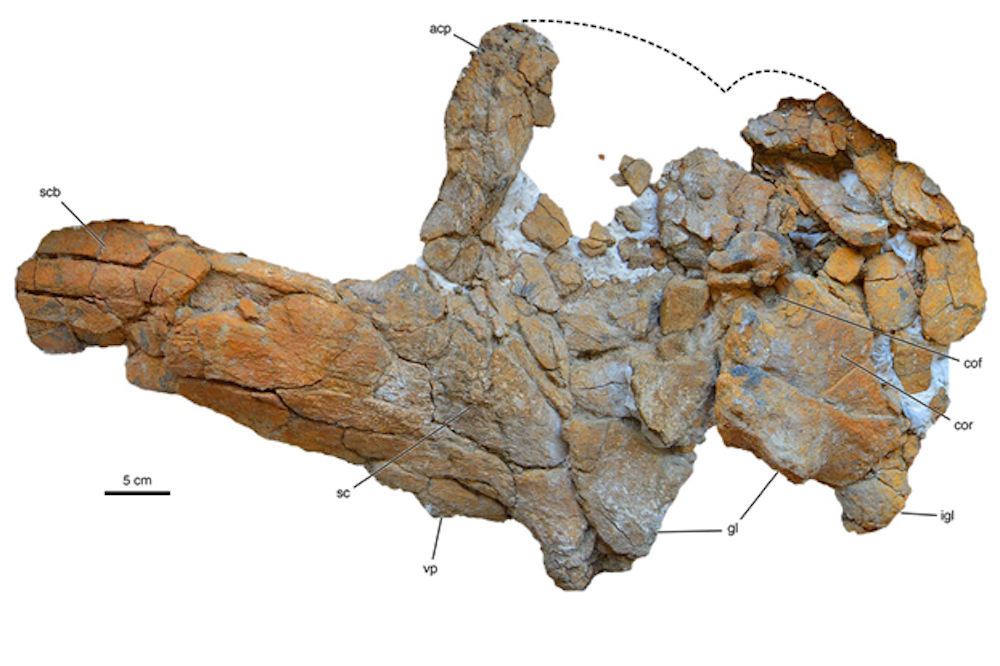
The right scapulocoracoid, or shoulder bone, of M. shahinae, as seen from the side. The dashed line indicates the probable extent of the missing portion and is based on complete scapulocoracoids of other titanosaurs, the researchers said.

Laura is the archaeology and Life's Little Mysteries editor at Live Science. She also reports on general science, including paleontology. Her work has appeared in The New York Times, Scholastic, Popular Science and Spectrum, a site on autism research. She has won multiple awards from the Society of Professional Journalists and the Washington Newspaper Publishers Association for her reporting at a weekly newspaper near Seattle. Laura holds a bachelor's degree in English literature and psychology from Washington University in St. Louis and a master's degree in science writing from NYU.









